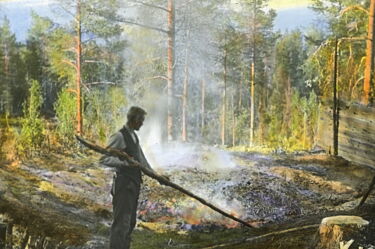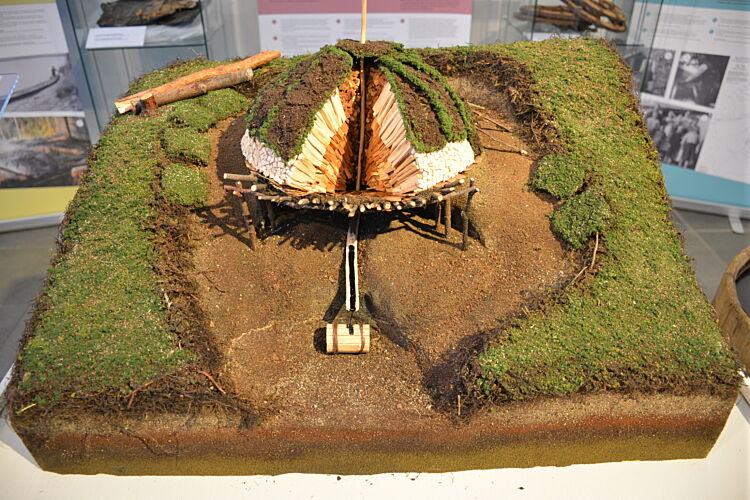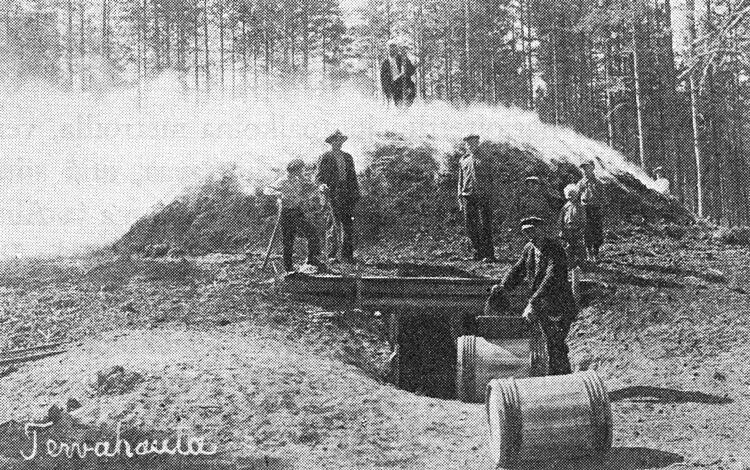
Pine roots and Alta’s Finnish roots
In Norway’s northernmost counties pine tar production seems to have been introduced around 1700 AD by the Kvens, Finnish-speaking immigrants, from the area north of the Baltic Sea. In this mini-exhibition you can see a film about tar burning and a model of a tar burning pit from the 1700s, which was located at Skillemoen, a few kilometres inland south of the Alta Fjord.
Tar was produced by burning resin-rich wood from stumps and roots of old pine trees. Pine tar was used as a wood preservative, mainly to impregnate wooden boats. It was also used on ropes and riggings, nets and other fishing equipment, sleds, sledges, wagon wheels, harnesses, and leather boots.

The oldest dated pine tar pits in Norway are from the 1000s. But the use of pine tar probably dates back to the Early Iron Age. The Kven immigration to Norway started in the early 18th century. Many of these immigrants fled from famine and war in their homelands. The Kvens preferred to settle where they could continue their traditional ways of life with farming, forestry, and fishing. In the Alta River Valley, the Kvens found available land, forests and a bountiful salmon river. There are still many Finnish place names along the river.

The exhibition is a result of a cooperation between the Alta Museum and the Alta Kven Society, Statnett and the Municipality of Alta. The model was made by Anna Richardson from Mylta Design.